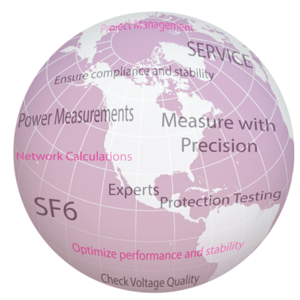
Transmission grids are undergoing a major transformation. While maintaining their efficiency, they must accommodate an ever-increasing share of volatile and non-regulatable power generation. At the same time, minimizing transmission system costs is required.
Outage analysis offers the user a high degree of flexibility in configuring outage scenarios. Here, outage analysis functions are available for a single and for multiple post-fault time points. Controller time constants and thermal loads can also be taken into account. When tracing individual failures, failure analysis provides a better understanding of the network.
The Shutdown Management functionality enables the modeling of planned equipment shutdowns including load management. The individual shutdowns can be easily applied and reset. A shutdown schedule for a given period is presented in tabular form. Shutdown management is an efficient tool for managing planned outages.
In the frequency response calculation, the modeled network is analyzed in the frequency domain. The frequency-dependent network impedance shows possible resonances in the network and also the effectiveness of planned countermeasures. The harmonic load flow calculation of the harmonic analysis determines for each node in the network the harmonic voltage caused by the harmonic currents injected into the network impedance. The voltage quality analysis can be extended, for example, by flicker calculations or filter analyses.
Within the framework of the transmission capacity analysis, an analysis of the voltage stability as well as the power transmission capacity of the grid is carried out. Through the transmission capacity analysis, the maximum transmission capacity between two grid regions can be calculated. For this purpose, there are several load/generation scaling options for the importing and also for the exporting grid region.

In grid reduction, the influence of neighboring grids is considered. Here, the neighboring networks themselves are not replicated in detail. The representation of the grid reduction, the reduced grid, is done in a variant that allows a simple comparison between the reduced and non-reduced grid.
If you have any questions, please do not hesitate to contact us by phone +49 (0) 2362 - 9977232 or by e-mail to engineering(at)kocos.com.

Challenges such as reverse power flow and voltage rise due to distributed generation as well as the integration of electromobility have led to a significantly higher effort in the planning and operation of distribution grids. Sophisticated and comprehensive grid optimization tools are required to perform the associated studies.

Planning and operation of industrial networks are becoming more challenging due to the increased use of power electronics, highly complex automation systems, and dependence on islanding. Faced with these challenges while ensuring continuity of production, power quality, and personnel protection, careful modeling and analysis of industrial electrical networks is paramount.

The more than 30 years of experience of the KoCoS engineering team and the “PowerFactory” grid calculation program from DIgSILENT provide a good basis for successful grid calculations. Based on load flow and short-circuit calculations, questions about voltage drop, protection functions and selectivity can be answered reliably.